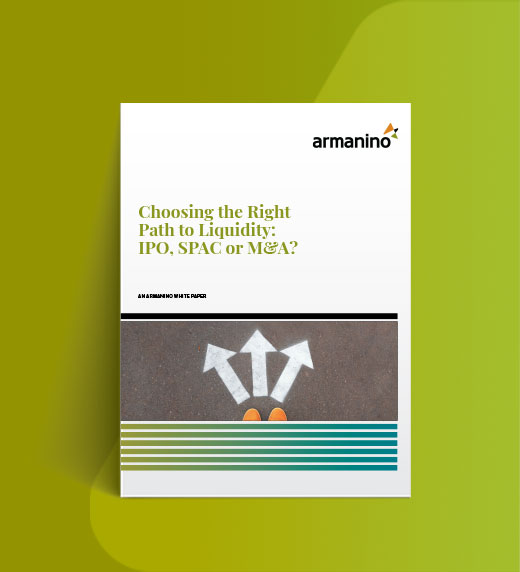Why It Matters
Outsourcing your firm’s fund administration may reduce your operational burden and improve your ROI:
- Partnering with a third-party fund administrator starts with scoping, discovery and onboarding before data migration and the engagement starts.
- Admins collaborate closely with funds to secure data, set up investor portals and design efficient workflows.
- Ongoing support and proactive check-ins contribute to long-term success and alignment with fund goals.
Providing More Value
Outsourcing fund administration to a third party can provide private equity, hedge funds, venture capital and real estate fund managers with much-needed back-office expertise and support. This may be more cost-effective and efficient than managing these activities in-house.
Fund administrators typically offer a full range of services such as investor portal setup, accounting and financial support, tax compliance and internal control process optimization aimed to support the back-office needs of fund managers. With the right outsourced fund administrator, operations are often easier to manage and provide a better value for both the managers and investors alike.
This guide is your step-by-step resource on how partnering with a third-party fund administrator works and how you can maximize your return on investment from the engagement. New provider partnerships typically include four phases: discovery, onboarding, operations launch and ongoing support. Throughout the relationship, managers benefit from working with an experienced team that understands fund administration and is able to contribute as a strategic partner.
Choosing a Fund Administrator: Co-sourcing or Outsourcing?
When you are ready to choose a provider, you might not know where to start. This is a good place to lean on the fund administrator, as they can help you determine what type of support will be needed for your fund and organization. They may even have recommendations for outside counsel and auditor support.
For technology support, you have the option of either co-sourcing your existing technology or using the technology of the fund administrator. These two approaches each have distinct implications for data autonomy, management and retention along with onboarding with a chosen provider.
Co-sourcing means the administrator works within your existing systems. You own your data, retain control and license your own technology. Outsourcing, on the other hand, involves using the administrator’s technology, which can reduce maintenance costs and simplify coordination, while you have full access to your data.
This article primarily examines the key stages and due diligence involved in selecting a provider and fully outsourcing your back-office operations, as well as the essential technology solutions that your fund administrator delivers for you and your investors.
4 Stages of Fund Administration Outsourcing
It is important to be transparent with your fund administrator about what type of support you will need. Keep reading to see what you can expect from your new administrator.
Stage #1: Discovery and scoping
Depending on your fund’s complexity, size, investor reporting needs, tech stack usage and other complementary services (such as valuation or loan administration), the discovery and scoping phase will vary.
This phase is crucial for you to get a glimpse of the team you may be working with and whether a fund administrator aligns with your expectations, timeline, and goals for your fund and your firm.
Typically, the provider is responsible for:
- Adapting services to your needs. Depending on your fund’s lifecycle, whether it’s new, active or winding down, costs may be shared with investors per fund agreements.
- Reviewing your investor base and reporting. This includes audit schedules and accounting timelines.
- Helping establish or enhance your back-office setup. This includes accounting systems, investor portals and accounts payable processes.
Stage #2: Onboarding and data migration
After agreeing on scope and deliverables, your admin will coordinate onboarding and the data transfer with you (if applicable). They prepare to officially start taking over admin functions, provide training and ensure your investor portal is ready by the date that the administration of your fund starts.
The fund administrator helps with:
- Reviewing deliverables and timelines: Together, your provider and you will create a contract defining expectations and outlining what products and services the administrator will be responsible for. A new fund that already has investors could launch quickly, in just four to six weeks, while experienced funds may need a full quarter for shadowing before officially transitioning to the new provider.
- Migrating existing funds’ documents and historical data. Coordinating with your previous administrator, your new provider will work to securely transfer your fund’s data on your behalf.
- Implementing your new technologies and helping with updates. Tech implementations such as setting up a new investor portal may require custom coding or integrations to securely transfer data. If you choose to use your existing technology, you may have a shorter implementation process, but your technological functionality may be limited or quickly become obsolete. Having your new admin review your full tech stack may protect you from missing out on improved efficiency and technological performance.
Stage #3: Operations and services
Your administrator delivers operational support for standard back-office functions associated with private investment funds. Maintaining clear communication and a strong working relationship with your provider is essential to facilitating a successful partnership.
The following operations are commonly outsourced to fund admins:
- Monthly and quarterly closes. While cash transactions are maintained in real time, non-cash transactions are typically recorded on a monthly and quarterly basis. Checklists, multiple levels of review and careful coordination are important for a successful close process. This improves quality and accuracy.
- Capital calls and distributions. Fund administrators manage these interactions with investors, seeing to details such as maintaining the correct wiring instructions. Keeping investors happy and helping them with onboarding and withdrawals is normally a core fund admin responsibility.
- Tracking partner capital. Partnership agreements outline specific allocation rules and fund administrators keep track of how profits and losses apply to each investor.
- Preparing financial statements. Investors can access up-to-date financial statements through a secure online portal. These statements include performance metrics, calculated fees, distributions and capital balances. These provide transparency and insight into fund activity.
- Investor reporting and tax coordination. Working with tax partners, your fund administrator provides required reporting to tax preparers for filing by tax deadlines. Your provider will also communicate with investors regarding their questions and reporting needs.
Stage #4: Continued advisory and support
After launch, your provider acts as an extension of your team, planning with auditors and tax partners for deadlines and reporting requirements. Fund administrator relationships are typically long-term. As you continue working together, they become a more valuable resource for ideas on improving your fund processes and systems.
How your fund administrator provides support:
- Proactively checking-in and communicating with your team. Fund admins should keep you aware of present and upcoming issues, deadlines and regulatory changes. Some stages of the fund lifecycle, such as new funds looking for investors as they launch, place firms in a ‘hurry up and wait’ situation of making arrangements with the admin while also having to delay fund launch. Instead of needing to chase your provider when you have questions or instructions for their team, they should be proactive and responsive.
- Helping during audits or fundraising periods. Your provider is a great resource, and their expertise is essential for using automation and reviewing processes for efficiency and accuracy. Busy reporting and fundraising makes it even more critical to have them provide insight and ideas.
- Connecting you with other services. You can connect with advisory, assurance and tax services through your administrator, who may have these practices in-house or be able to provide referrals.
7 Best Practices for Fund Administration Outsourcing
To make the most of your fund administration engagement, here are seven best practices from our experience working with clients:
- Choose a specialized provider: Your fund administrator should be able to highlight their expertise when speaking about your investment mix and your complex fund structure. Choose a provider that has the right qualifications and experience.
- Prioritize investor satisfaction: If the investor is happy, the fund manager is happy and the fund administrator is happy in turn. Everything about the experience of working with your provider should be professional and valuable for your investors.
- Implement the right technologies: Your fund admin outsourcing and IT provider should advise you on technology and help you implement the best technologies, focused on security and compliance. The investor portal should be user-friendly and consider your investor’s needs.
- Develop clear documentation: Document your processes and procedures so you can improve them. Your provider can take the lead on this and proactively share ideas for making your processes even better.
- Use proper segregation of duties: Structure roles to ensure there are multiple eyes on every report to help ensure accuracy. Find a fund admin that prioritizes this.
- Maintain proactive communication: Meeting regularly, such as weekly, sets communication expectations and builds the relationship.
- Strive for a long-term relationship: Approaching the relationship as a strategic partnership helps you get more value from collaborating with your provider.
With the right third-party fund administrator, fund managers can focus on raising capital. You can anticipate compliance and regulatory changes by working with a partner who’s proactive and understands your needs. This support can become a competitive advantage.
Outsource Your Fund’s Back Office
Are you looking for a new fund administrator to keep everything running smoothly? Choose a fund administration team with specialized operational, regulatory and financial experience. Find out how our fund administrative services reduce the admin burden for our clients so they can keep growing.



